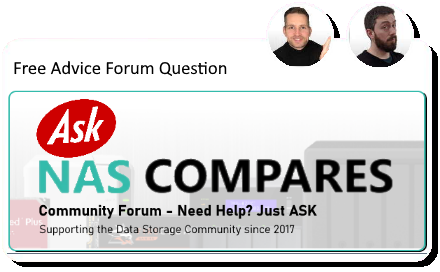Posts: 1,079
Threads: 1,080
Joined: Feb 2020
Reputation:
2
Hello, I've already tried everything - synology support, my ISP support, tried all home configuration, LAN speed is ok like 200-300MB/s, but remotely goes down even below 100kB/s, my internet speed is 900/900mbs and it really works on my computer. My friend has ds923+ and just to try he gave me his link to download and transfer from his NAS is +50MB/s. I connect my (and I setup his nas the same way) via ddns (synology.me). I even bought ugreen dxp4800 plus and the speed remotely is similar. Can you help me somehow? Thank you
Shema
Posts: 5,338
Threads: 2
Joined: Jun 2022
Reputation:
35
Given that you’ve tested with both the DS420+ and the UGREEN DXP4800 Plus and are seeing the same slow speeds remotely (even though your internet is 900/900 and verified working), it’s pretty safe to assume this is a routing or connection method issue rather than a hardware problem.
A few things to check or try:
1. QuickConnect vs. DDNS vs. Tailscale:
Even if you’re using DDNS, your connection may still be going through Synology’s relay servers, especially if proper ports aren’t open. Relay mode is notorious for painfully slow speeds. Make sure ports 5000/5001 or 443 are manually forwarded on your router to your NAS.
Alternatively, using Tailscale is a great option. It’s a mesh VPN that creates a direct encrypted tunnel between your devices — I’ve seen people jump from <1MB/s to 50–80MB/s just by switching to it. It’s free for personal use and works on both Synology and UGREEN with some basic setup.
2. Double NAT / CGNAT from ISP:
If your ISP is using Carrier Grade NAT (CGNAT), you may not have a proper public IP. This would explain why your friend’s DDNS access is fast and yours isn’t. You can test this by checking your WAN IP on your router vs. what sites like whatismyip.com report. If they’re different, you’re likely behind CGNAT — and port forwarding won’t work properly. Again, Tailscale bypasses this completely.
3. Router or firewall issues:
Check if your router has any bandwidth limits, QoS profiles, or security features that may be throttling outbound connections from your NAS. Some “smart” firewalls or antivirus modules can slow things down without being obvious.
4. Protocols matter:
Try accessing your NAS remotely using different methods: WebDAV, SFTP, or even a VPN connection. The protocol used can have a big effect on speed, and some methods (like WebDAV over HTTPS) can be single-threaded and slow.





